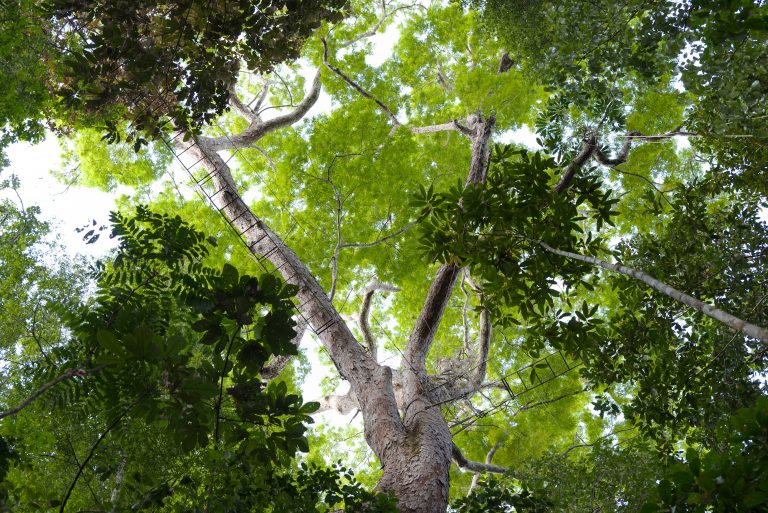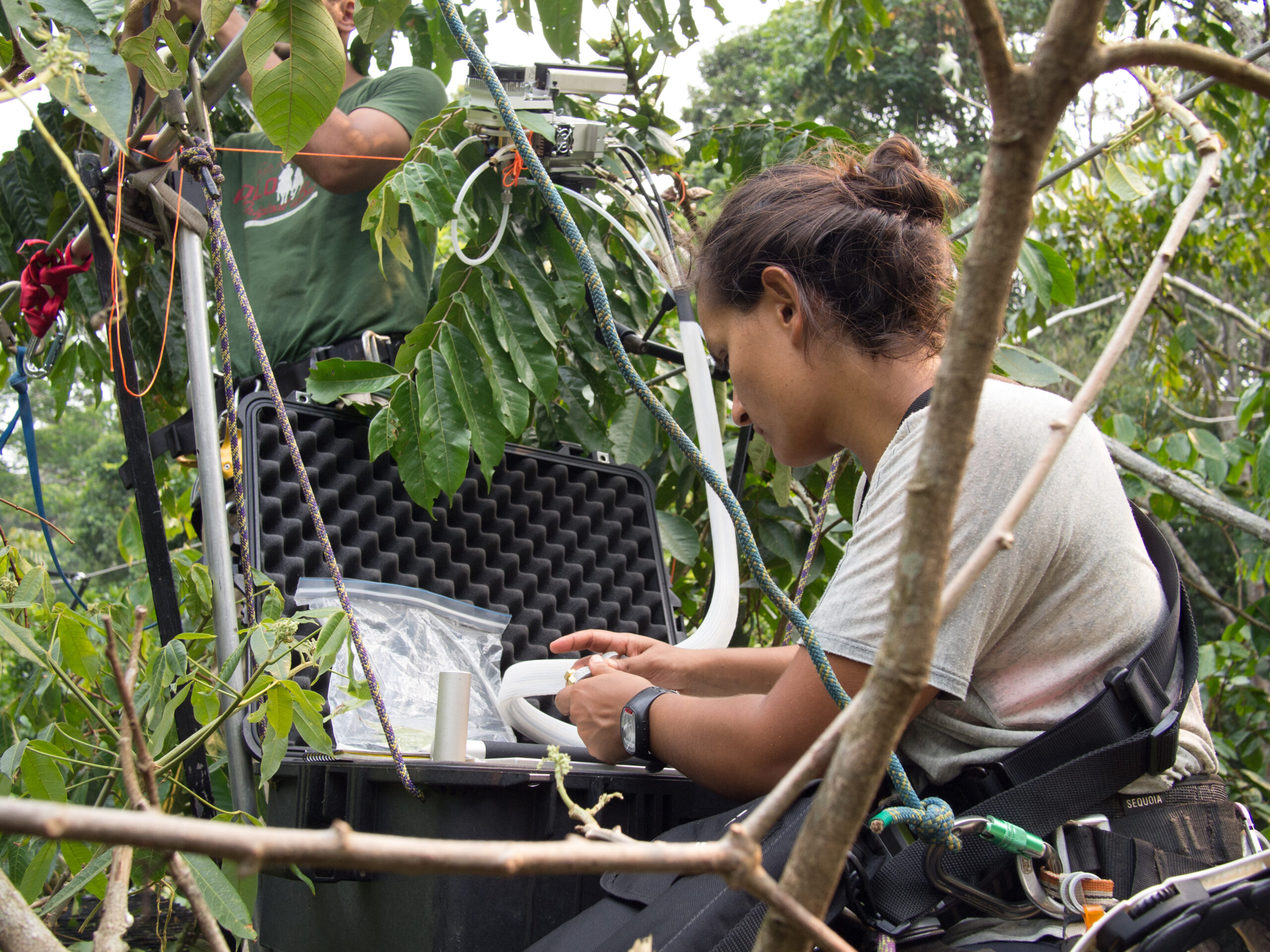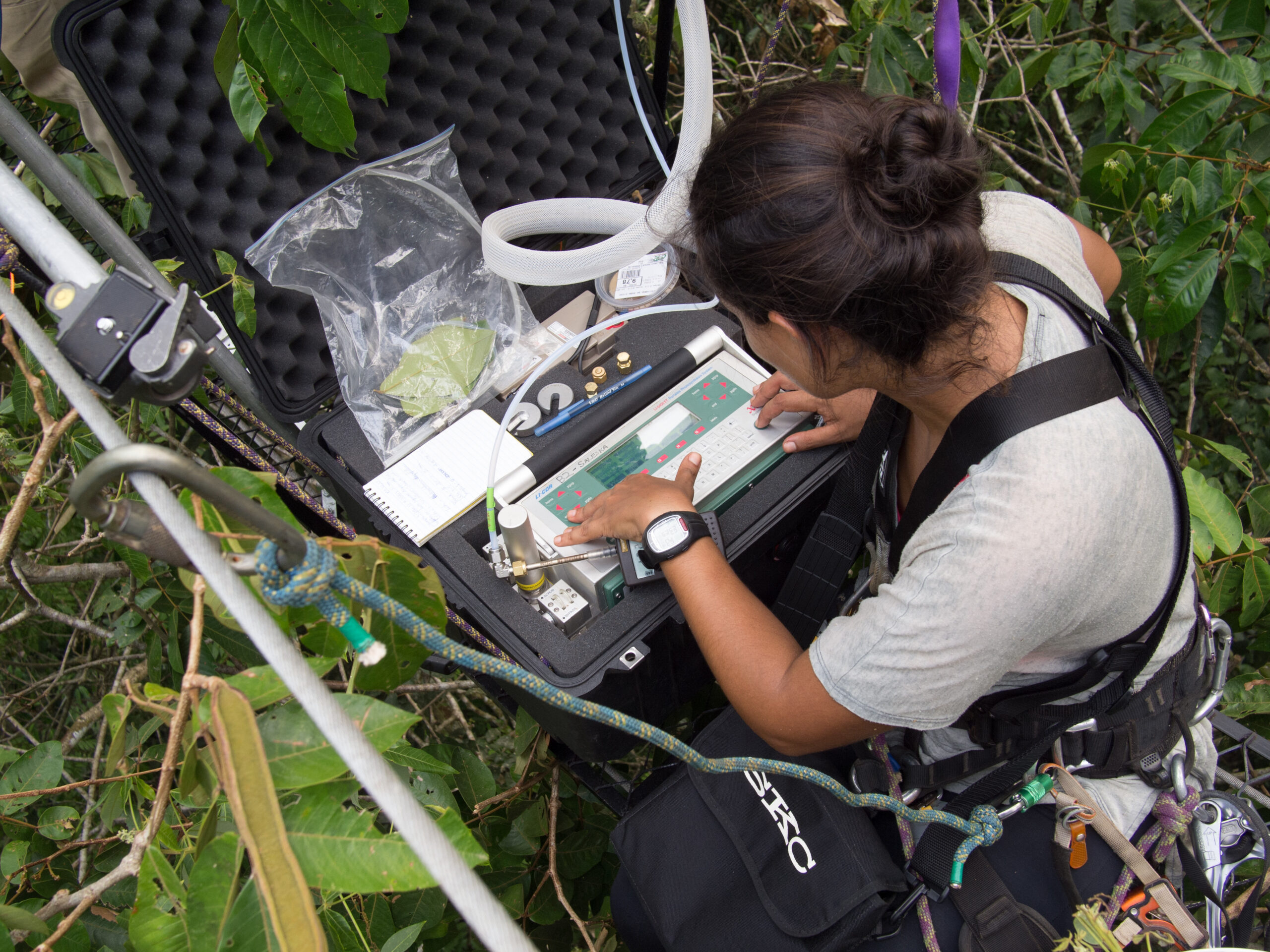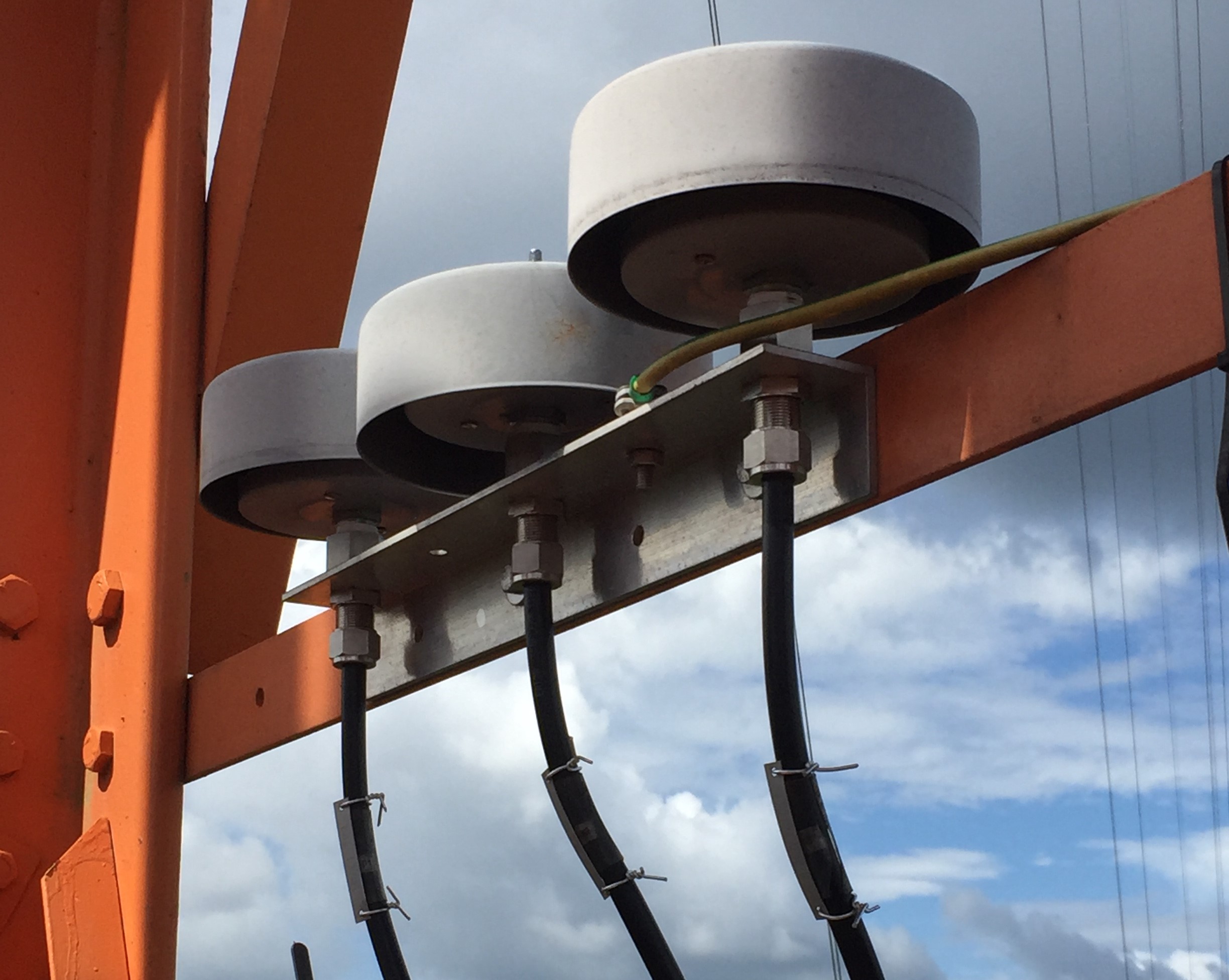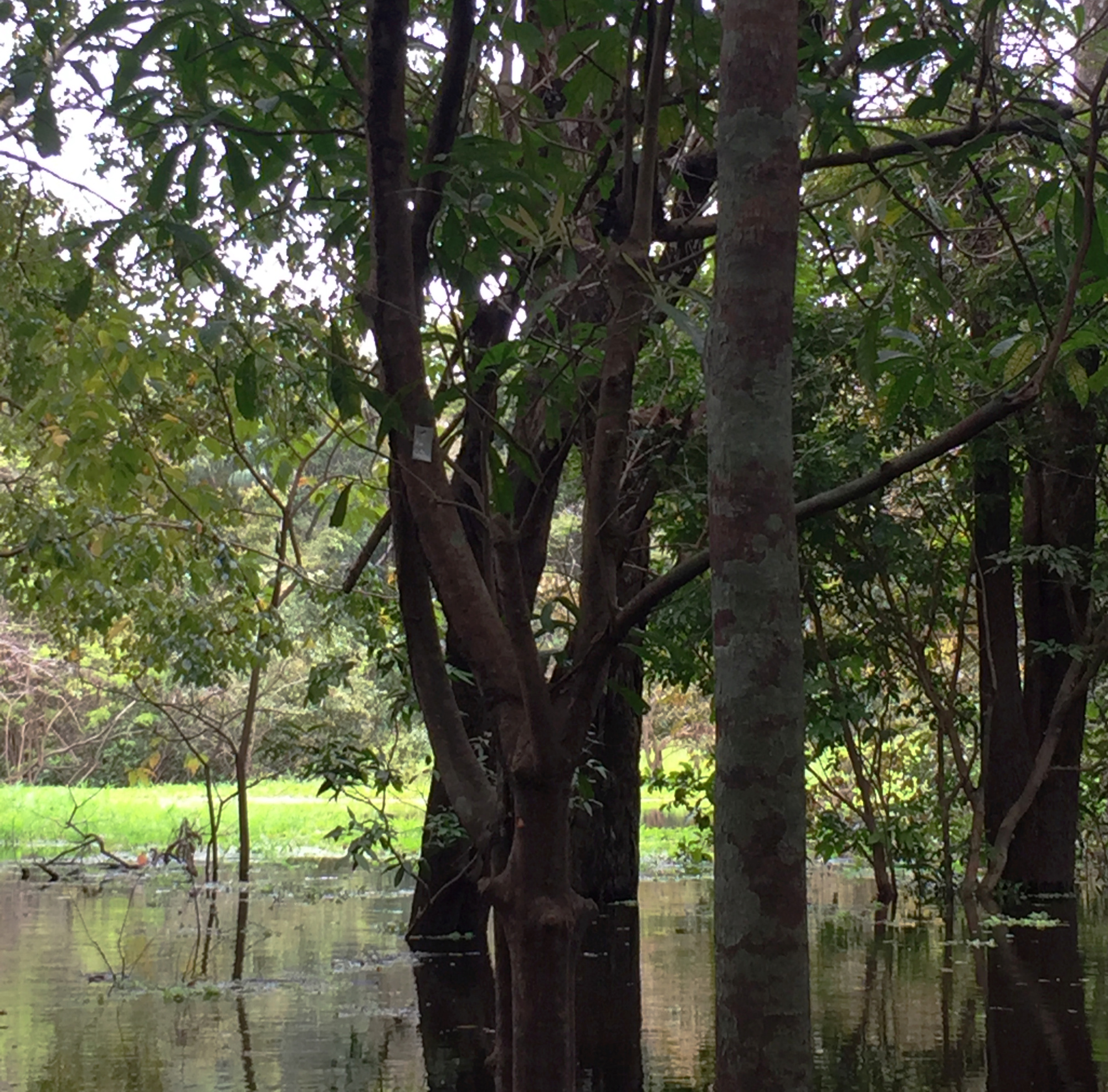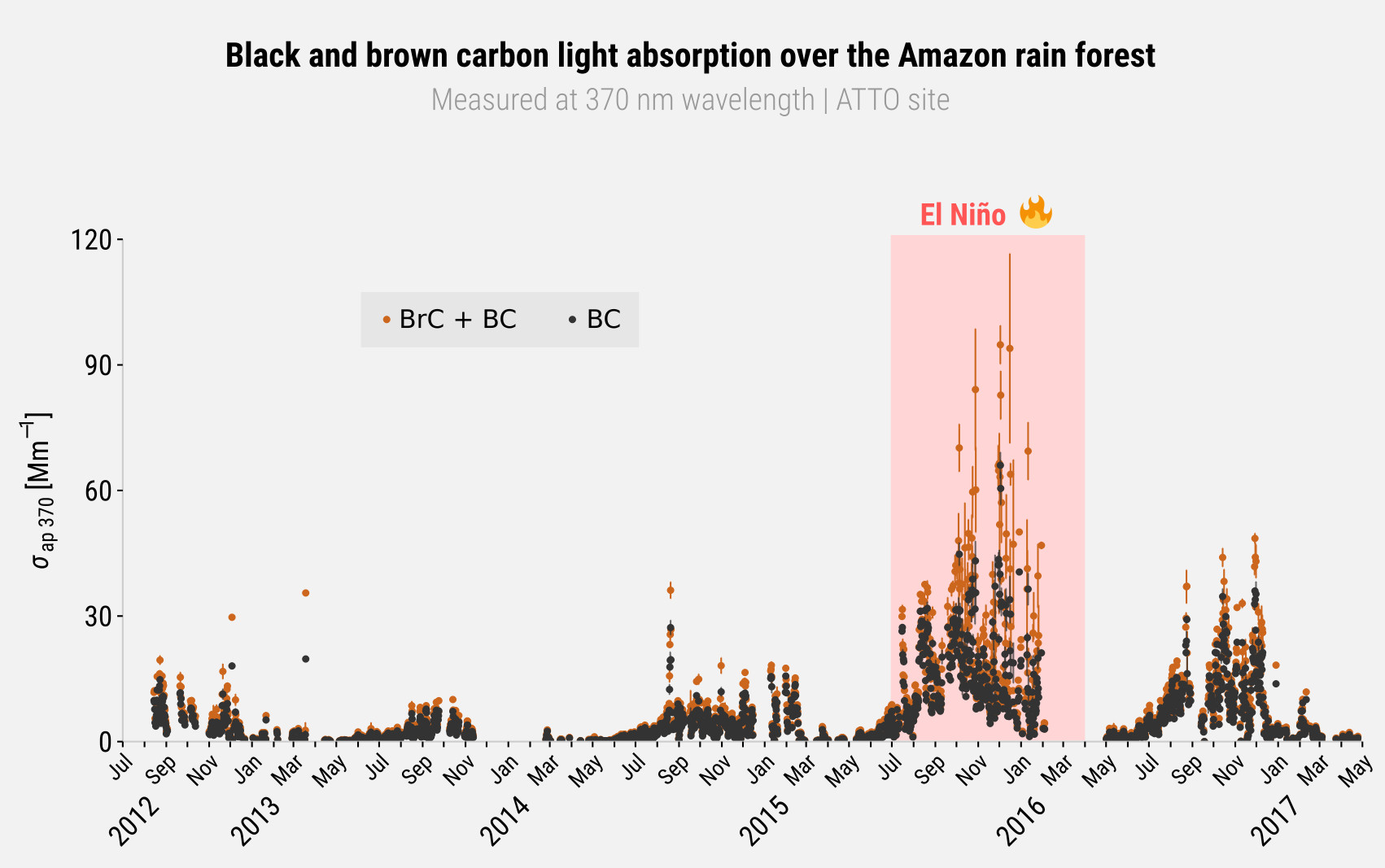Winter is coming. In the northern hemisphere that is. In these regions, trees are shedding their leaves this time of year, preceded by those beautiful fall colors. Tropical forests like the Amazon do not have such pronounced seasons and are evergreen. Yet they still shed leaves and flush new ones fairly regularly about once a year. What drives the seasonality of leaf flushing we still do not fully understand. But we do now know that this is a really important process because it influences the photosynthetic capacity of the forest. Simply speaking, young leaves are more effective than old ones in performing photosynthesis and sequestering carbon. This means that trees with lots of old leaves are less productive than after flushing new leaves.
In a new study, Nathan Gonçalves and co-authors now wanted to answer two important questions related to this.
1) Do extreme climate events such as droughts influence leaf flushing, and thereby the average leaf age and photosynthetic capacity of the forest?
And 2) Is it possible to monitor more subtle changes associated with extreme events (compared to season changes) with satellites?
To address the first question they studied the 2015/2016 El Nino. This manifested as an extreme drought in the Amazon basin. They found that many trees flushed new leaves right after the drought ended, some four months prior to other years. This resulted in more mature leaves much earlier than usual. This shift in leaf age ended up having an impact on the photosynthetic capacity for about 1.5 years after the drought.
To tackle the second question they compared photos from cameras mounted on the ATTO tall tower with satellite data. In the past, data from remote sensing faced some challenges (like cloud cover for example) until scientists developed a new correction method called MODIS-MAIAC. This method had been proven to detect the large seasonal changes in leaf ages. Gonçalves and co-authors could now show they are also able to pick up on the smaller anomalous shifts caused by the El Nino drought.
The paper was published in “Remote Sensing of Environment” and is available here (closed access): Both near-surface and satellite remote sensing confirm drought legacy effect on tropical forest leaf phenology after 2015/2016 ENSO drought.
Similar articles
Eliane Gomes Alves and her colleagues measured isoprene emissions at the ATTO 80-meter tower across three years to better understand how these emissions vary seasonally and under extreme climatic conditions like El Niño events. They also looked into which biological and environmental factors regulate the emission of isoprene to the atmosphere.
BVOC emissions in the Amazon have been studied for decades, but we still don’t fully understand when and under what conditions tree species or even individual trees emit more or fewer isoprenoids. To address this, Eliane Gomes Alves and her colleagues measured isoprenoid emission capacities of three Amazonian hyperdominant tree species.
High-quality atmospheric CO2 measurements are sparse across the Amazon rainforest. Yet they are important to better understand the variability of sources and sinks of CO2. And indeed, one of the reasons ATTO was built was to obtain long-term measurements in such a critical region. Santiago Botía and his colleagues now published the first 6 years of continuous, high-precision measurements of atmospheric CO2 at ATTO.
A new study shows that tree growth of Nectandra amazonum (Lauraceae) in the Central Amazonian floodplains does not respond to the annual long-term flooding but to variation of minimum temperature and evapotranspiration.
A new study by Löbs et al. in Biogeosciences documents the microclimatic conditions for tropical mosses as a baseline for studies on their overall relevance on biogeochemical cycling. They found that water and light are overall the most important requirements for them to become photosynthetically active. However, their habitat determines which of the two plays the bigger role.
Pfannerstill et al. compared VOC emissions at ATTO between a normal year and one characterized by a strong El Nino with severe droughts in the Amazon. The did not find large differences, except in the time of day that the plants release the VOCs. They published their results in the journal Frontiers in Forest and Global Change.
Saturno et al. analyzed the concentration of black and brown carbon in the atmosphere above the Amazon. They found that the dry season is characterized by lots of biomass burnings, which produce a lot of black and brown carbon. But they also sound significant interannual variations. The results were published in ACP.


